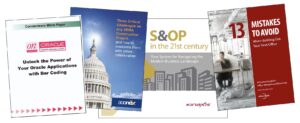
Get faster approvals from your B2B clients
This recent article on getting faster approvals from your B2B clients caught our eye. It’s an excellent follow-up to our recent post on 9 tips for how to be a great client, so we asked permission to republish it.
Many corporate writers go crazy with what’s known as the “approval process.”
A more accurate title might be the “disapproval process” where sources nit-pick drafts to death.
I seldom have difficulty with any approval process, however, because over the years I’ve learned a series of strategies that really work.
Let me share them with you.
1. DON’T use the words “approval process”
Instead, call it “fact-checking.” This puts the emphasis where it belongs—on correcting errors, not on tweaking copy.
Even though my clients might call it the approval process, I steer clear of that term as if I’m avoiding a gigantic spoonful of cod liver oil.
2. DO put the deadline in the subject line
Your subject line might read something like this:
FACT-CHECKING white paper draft: DEADLINE, December 6, 5 pm
Senior people such as CEOs and VPs especially appreciate the clear specificity of this kind of subject line. And typically, I find, they respond to it.
Adding the time — 5 pm — is another tip. It’s not necessary, but I find it makes people take the deadline more seriously.
3. DO be polite
I never act as though I’m the boss of the company. The people who talk to me are doing me a favour!
I appreciate that they’re willing to review a draft white paper to help ensure its accuracy.
4. DO ask them to remove words if they add new ones
I always ask reviewers to remove the same number of words that they want to add.
This will strike most people as reasonable. And it helps prevent them from going off on tangents that add little to the white paper’s impact.
5. DO give explicit instructions for how to give changes
Here, for example, is a template that I use. You’re welcome to save it and use it yourself:
Dear XXXX,
Thanks so much for speaking with me recently about XXXXXXXX. Here’s a draft version of the white paper.
I’d be grateful if you could read it and get back to me no later than Friday, June 6, letting me know whether there are any factual errors in this draft.
If so, please type your corrections directly into the piece (preferably in another color, or in CAPITAL LETTERS, so I can spot the changes easily.)
If there is text that needs to be removed, please place it between square brackets [like this].
Please note that the white paper is already as long as it should be, so if you need to add additional words you should mark an equal number of words to delete.
If you want to speak with me, I’m at 123-456-7890. Thanks!
Note my detailed and specific directions, including how to use square brackets, that spell out exactly what I want my sources to do.
6. DON’T invite reviewers to re-think the whole draft
Of course I give reviewers the opportunity to correct mistakes. But I don’t invite them to rethink and redirect the whole draft.
In a proper white paper development process, all reviewers have a chance to give their input during the kickoff call and to comment on the draft executive summary.
All this may seem unnecessary to writers from traditional magazines or newspapers, where sources seldom get the chance to review anything before it’s published. Mistakes and all.
But for anyone working in the corporate world, this kind of clear, open communication with the people you’ve interviewed can go a long way to making the “approval process” faster and more positive.
What challenges have you faced when trying to get approvals? How did you get through them? Please tell us in the Comments section of this post.
Want to see more handy articles like this? Get my free newsletter.




Thank you for this! This really does help avoid the top problems I see in reviews: going off on tangents that don’t improve the paper and seemingly endless “rounds” of edits. The first tip is the most helpful for me, because it changes the conversation right from the start. Thanks Daphne!
Glad to help, Sarah!
Happy Sunday Daphne:
Excellent tips!
I’m a detailed person.
Tips # 1, 2, & 3 set the tone for the client being fully persuaded, establishing your authority, and high influence.